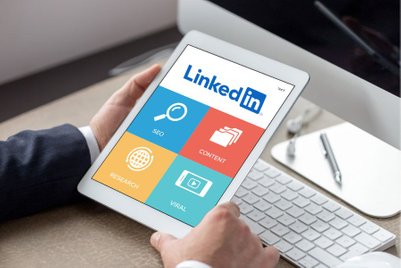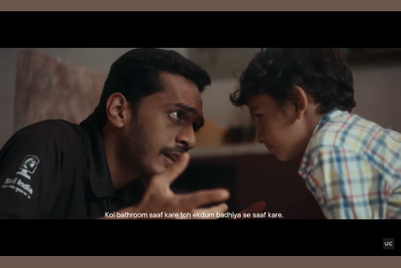
In a marketing environment where performance is prized and attention spans are traded like commodities, B2B marketers are leaning into video as both a storytelling tool and a growth engine. According to LinkedIn’s ‘B2B ROI Impact’ research conducted with YouGov, a staggering 94% of B2B marketers across markets—including India—believe video accelerates advertising ROI.
But it’s not just video for video’s sake. Context matters. 68% of marketers surveyed said video is the most effective format to reach and influence buyer groups, especially when delivered in a relevant, trusted environment.
Enter BrandLink, LinkedIn’s evolution of its earlier Wire Programme, designed to give advertisers access to in-stream video placements aligned with high-quality editorial and creator content. It’s a bold attempt to redefine how brand storytelling works in a B2B context—moving beyond rational messaging to embrace influence, authenticity, and credibility.
From Wire to BrandLink: Evolution beyond the CPM
BrandLink began as the Wire Programme in June 2024 with a fixed CPM of $50 and a 50-50 revenue split between LinkedIn and publishers. That model has since evolved into an auction-based system, signalling a more dynamic, demand-led pricing structure.
“With the Wire Programme, now called BrandLink, our goal is to build a high-value, brand-safe video ecosystem that benefits marketers, creators and publishers—while delivering high quality content to our members,” explains Sachin Sharma, director of LinkedIn Marketing Solutions India, told Campaign. “We’ve transitioned from a fixed CPM model to an auction-based pricing model, which allows for greater flexibility and efficiency based on customers’ campaign needs and audience demand.”
For advertisers, this means more control and scalability. For publishers, it opens up a new revenue stream by monetising their organic video content on LinkedIn. Sharma adds, “Marketers can choose to align brands with a collection of videos—‘shows’—produced by participating creators and publishers around a core theme.”
Is BrandLink democratising video inventory?
LinkedIn has never been a cheap date for advertisers. The platform’s inventory has long commanded premium cost per mile (CPMs), and this reputation carries over into BrandLink. So, is the new programme a shift toward accessibility, or simply a broader menu in the same gourmet kitchen?
“When customers advertise on LinkedIn, an auction system determines when their ad is served and how much they’ll pay,” says Sharma. “We believe that CPMs are not the best measure of value for B2B, as our customers measure impact of advertising in other ways, like influenced pipeline, qualified leads, or influenced revenue.”

Indeed, the numbers back the platform’s case. Advertisers using BrandLink have reported, on average, a 130% higher video completion rate and a 23% higher view rate than standard video ads. What’s more, members exposed to BrandLink ads are 18% more likely to convert into leads.
The creative pivot: Emotional storytelling in B2B
In a market long dominated by whitepapers and webinars, BrandLink is pushing Indian B2B marketers toward video storytelling that resonates emotionally. According to Sharma, “Context matters, especially in advertising. When marketers deliver ads against contextually relevant content, their brand becomes memorable.”
This insight is reflected in the themes LinkedIn is prioritizing: AI and innovation, entrepreneurship, the CEO playbook, female leadership, and small business growth. These are not just trending topics—they’re editorially rich environments that help brands amplify their narrative in a professionally relevant setting.
Lenovo India is already seeing the benefits. “At Lenovo, we’re always looking to lead with innovation—not just in our products, but in how we connect with our audiences,” says the company’s director of brand strategy and content, Chandrika Jain. “With the launch of our Aura Edition AI PC, we saw BrandLink as a fresh and impactful way to drive awareness and reach the right professionals at scale. Partnering with Bloomberg through this programme allowed us to do just that.”
One of LinkedIn’s longstanding strengths is its unmatched first-party data, which forms the backbone of any successful account-based marketing (ABM) strategy. BrandLink leverages this by letting advertisers serve video content based on professional attributes like job title, seniority, and industry—while ensuring those ads appear alongside contextually relevant content from trusted sources.
“Because their video ads are contextually aligned with trusted publisher or creator content in the LinkedIn feed,” Sharma says, “marketers can ensure that their messages are more likely to resonate, be remembered, and drive meaningful action.”
Publishers, creators, and the new B2B video stack
A defining feature of BrandLink is its dual engine: publisher-driven authority and creator-driven authenticity. The programme includes video content from heavyweights like author and futurist Bernard Marr, founder of the Female Collective Rebecca Minkoff, Sprinkles and Pizzana’s founder Candace Nelson; Guy Raz, CEO of Built-It Productions; and Shelley Zalis, founder and CEO of The Female Quotient. It has plans to onboard regional creators globally.

“BrandLink helps to surface knowledge and insights from trusted publishers and creators who are subject matter experts on topics that matter most to our members,” Sharma explains. “This knowledge fuels our professional community of more than 1 billion members and creates additional opportunities for our customers.”
Notably, publishers aren’t required to create exclusive video content for the platform. Instead, they can monetise existing editorial videos via LinkedIn pages through content sponsorships. However, ‘Shows by LinkedIn’—original video series around themes like leadership and innovation—give brands additional, premium avenues for alignment.
The India equation: Precision over scale?
While scale continues to be a sticking point for many Indian publishers, Sharma sees the tide turning. “It’s clear that marketers here are focused on driving reach-with-relevance by aligning with trusted, contextually rich content to connect with professional audiences in a more targeted and memorable way,” he notes.
Publishers are beginning to explore pre-roll placements more confidently, and although Sharma stops short of sharing pitch-to-conversion ratios or deal volumes, the sentiment is optimistic. “We’re seeing strong interest from Indian advertisers and early traction from publishers,” he affirms.
Some global publishers are predicting seven-figure revenues from BrandLink within a year. Whether Indian publishers can replicate this success will depend on their ability to sell precision over mass reach—a shift many are beginning to embrace, albeit cautiously.
Beyond vanity metrics: Measurement with teeth
Vanity metrics like views and completion rates may have once sufficed, but B2B marketers today demand deeper attribution. LinkedIn is stepping up its game here too.
“With BrandLink, advertisers have access to native video metrics like CPV, view rates, and frequency—but that’s just the start,” says Sharma. “They can also run LinkedIn Brand Lift Studies, integrate their CRM data via our Revenue Attribution Report (RAR), or use our Conversions API to connect marketing spend to real business results like pipeline, influenced revenue, and lead quality—all while maintaining user privacy and data integrity.”
In an age where misinformation, clickbait, and MFA (Made-for-Advertising) sites pollute the open web, LinkedIn is positioning BrandLink as a curated, brand-safe alternative. “Trust is at the core of all we do, ensuring a safe and secure experience for our members and customers,” Sharma says. “That’s why brand safety isn’t just an advertising priority for us; it’s a platform imperative.”
With its mix of premium inventory, rich first-party data, and editorially relevant video content, BrandLink is not chasing scale for scale’s sake. It’s chasing resonance—and in the often-slow-moving world of B2B marketing, that’s a pretty radical proposition. As Sharma succinctly puts it: “We’re focused on helping marketers prove impact, not just reach.”


.jpg&h=334&w=500&q=100&v=20250320&c=1)

.jpg&h=334&w=500&q=100&v=20250320&c=1)
.jpg&h=334&w=500&q=100&v=20250320&c=1)
.jpg&h=334&w=500&q=100&v=20250320&c=1)
.jpg&h=334&w=500&q=100&v=20250320&c=1)

.jpg&h=334&w=500&q=100&v=20250320&c=1)
.jpg&h=334&w=500&q=100&v=20250320&c=1)
.jpg&h=334&w=500&q=100&v=20250320&c=1)

.jpg&h=268&w=401&q=100&v=20250320&c=1)
.jpg&h=268&w=401&q=100&v=20250320&c=1)

.jpg&h=268&w=401&q=100&v=20250320&c=1)
.jpg&h=268&w=401&q=100&v=20250320&c=1)
.jpg&h=268&w=401&q=100&v=20250320&c=1)

